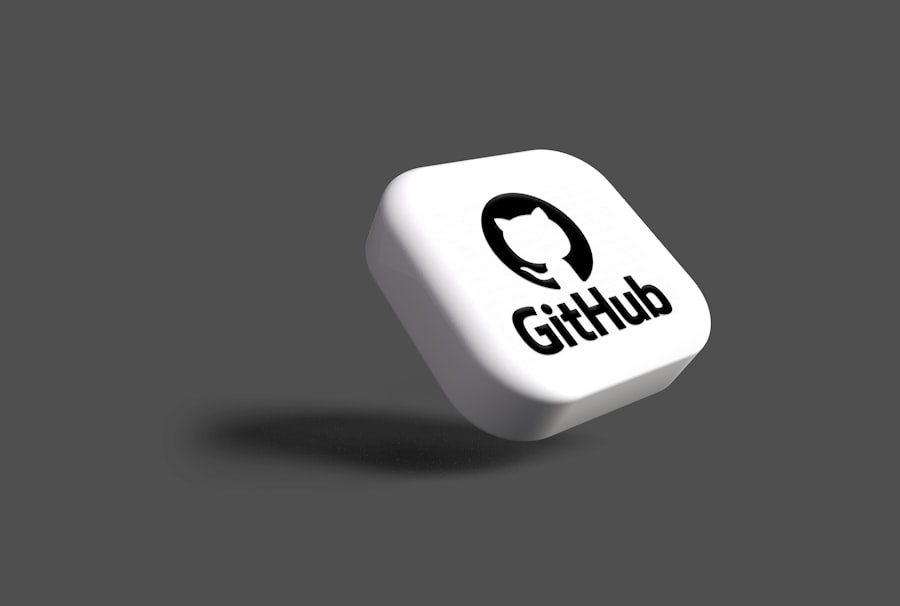The landscape of employment has undergone a significant transformation in recent years, with remote hiring emerging as a prominent trend. This shift has been accelerated by technological advancements and the global pandemic, which forced many organizations to adapt to a remote work model. Remote hiring allows companies to tap into a diverse talent pool, unrestricted by geographical boundaries.
This flexibility not only enhances the chances of finding the right candidate but also fosters a more inclusive workforce. As businesses increasingly embrace this model, understanding the nuances of remote hiring becomes essential for both employers and job seekers. Remote hiring involves a series of processes that differ from traditional hiring methods.
It encompasses everything from job postings and interviews to onboarding and team integration, all conducted through digital platforms. The reliance on technology in this context necessitates a robust framework for collaboration and communication. One of the most effective tools that have emerged in this domain is Git, a version control system primarily used for software development.
Git facilitates collaboration among distributed teams, making it an invaluable asset in the remote hiring process. By leveraging Git, organizations can streamline their hiring practices while ensuring that they assess candidates’ skills effectively.
Key Takeaways
- Remote hiring is becoming increasingly popular, and it is important to understand the role of Git-based collaboration in this process.
- Git-based collaboration is crucial in remote hiring as it allows for seamless teamwork, version control, and code review.
- Git helps in assessing candidates’ skills by providing a platform for them to showcase their coding abilities and collaborate on projects.
- Effective communication and collaboration can be ensured through Git by providing a centralized platform for team interaction and project management.
- Git can also be utilized for remote onboarding and training, allowing new hires to access resources and collaborate with their team from anywhere.
Importance of Git-Based Collaboration in Remote Hiring
Git-based collaboration is pivotal in remote hiring as it provides a structured environment for developers to work together, regardless of their physical location. This system allows multiple contributors to work on the same project simultaneously, tracking changes and managing versions seamlessly. In a remote hiring context, Git serves as a platform where candidates can showcase their coding abilities and collaborative skills through real-time contributions to projects.
This not only helps employers gauge technical proficiency but also offers insights into how candidates interact with others in a team setting. Moreover, Git’s branching and merging capabilities enable candidates to experiment with their code without affecting the main project. This feature is particularly beneficial during the hiring process, as it allows candidates to demonstrate their problem-solving skills and creativity.
Employers can review these contributions to assess not only the quality of the code but also the candidate’s approach to challenges.
How Git Helps in Assessing Candidates’ Skills

One of the most significant advantages of using Git in the remote hiring process is its ability to provide a clear picture of a candidate’s technical skills. When candidates contribute to a Git repository, they leave behind a trail of their work that can be analyzed in detail. Employers can examine commit histories, code quality, and the complexity of problems tackled by candidates.
This data-driven approach allows for a more objective assessment compared to conventional methods, which often rely heavily on subjective evaluations during interviews. For instance, consider a scenario where a candidate is tasked with fixing bugs in an existing codebase. By reviewing the candidate’s commits, an employer can see not only how quickly the candidate addressed the issues but also how effectively they communicated their thought process through commit messages.
This level of transparency is invaluable; it reveals not just technical competence but also the candidate’s ability to articulate their reasoning and collaborate with others. Furthermore, Git allows employers to assess how well candidates adhere to best practices in coding, such as writing clean, maintainable code and following established workflows.
Ensuring Effective Communication and Collaboration through Git
Effective communication is crucial in any hiring process, but it becomes even more critical in a remote setting where face-to-face interactions are limited. Git facilitates this communication by providing tools that allow teams to discuss changes, propose modifications, and review each other’s work in an organized manner. Features such as pull requests enable candidates to submit their code for review, prompting discussions that can reveal their thought processes and willingness to accept feedback.
In addition to facilitating discussions around code changes, Git also integrates with various communication platforms like Slack or Microsoft Teams. This integration allows teams to receive notifications about updates in real-time, ensuring that everyone stays informed about project developments. For remote teams, this level of connectivity fosters a sense of belonging and collaboration that might otherwise be challenging to achieve.
By utilizing Git as a central hub for communication during the hiring process, organizations can create an environment where candidates feel engaged and valued.
Utilizing Git for Remote Onboarding and Training
Once a candidate has been hired, the onboarding process is critical for ensuring they integrate smoothly into the team. Git can play a significant role in this phase by providing new hires with access to existing projects and documentation. By familiarizing themselves with the codebase through Git repositories, new employees can quickly understand the team’s workflows and coding standards.
This hands-on approach accelerates the learning curve and helps new hires become productive members of the team more rapidly. Moreover, Git’s version control capabilities allow organizations to maintain comprehensive documentation of their projects. This documentation can include guidelines on coding practices, project architecture, and team processes—all of which are essential for new hires to grasp quickly.
By leveraging Git for onboarding, companies can create a structured training program that not only imparts technical knowledge but also instills a sense of ownership among new employees as they contribute to ongoing projects from day one.
Overcoming Challenges in Remote Hiring with Git-Based Collaboration

While remote hiring offers numerous advantages, it is not without its challenges. One common issue is ensuring that candidates possess the necessary skills for remote collaboration. Git-based collaboration can help mitigate this challenge by providing a platform where candidates can demonstrate their abilities in real-world scenarios.
However, organizations must also be aware of potential pitfalls such as miscommunication or misunderstandings arising from remote interactions. To address these challenges effectively, companies should establish clear guidelines for using Git during the hiring process. This includes defining expectations for code quality, communication protocols, and timelines for project contributions.
Additionally, providing candidates with resources or tutorials on using Git can help level the playing field for those who may be less familiar with the tool. By proactively addressing these challenges, organizations can create a more efficient and effective remote hiring process that leverages Git’s strengths.
Best Practices for Using Git in Remote Hiring Processes
To maximize the benefits of Git in remote hiring, organizations should adopt several best practices that enhance collaboration and assessment. First and foremost, it is essential to create a welcoming environment where candidates feel comfortable contributing their ideas and code. This can be achieved by fostering open communication channels and encouraging feedback throughout the process.
Another best practice involves setting clear expectations regarding project contributions. Employers should outline specific tasks or challenges for candidates to complete within a defined timeframe. This not only helps assess technical skills but also provides insight into how candidates manage their time and prioritize tasks in a remote setting.
Additionally, regular check-ins during the evaluation period can help maintain engagement and provide opportunities for candidates to ask questions or seek clarification. Finally, organizations should consider incorporating peer reviews into their assessment process. By allowing team members to evaluate candidates’ contributions collaboratively, employers can gain diverse perspectives on each candidate’s fit within the team dynamic.
This collaborative approach not only enriches the evaluation process but also reinforces the importance of teamwork in remote environments.
The Future of Remote Hiring with Git-Based Collaboration
As remote work continues to gain traction across various industries, the role of tools like Git in the hiring process will only become more pronounced. The ability to assess candidates’ skills through real-time collaboration offers organizations a unique advantage in identifying top talent while fostering an inclusive work environment. By embracing Git-based collaboration, companies can streamline their remote hiring processes and create a more engaging experience for both candidates and employers.
Looking ahead, it is likely that we will see further innovations in how organizations leverage technology for remote hiring. As tools evolve and new methodologies emerge, companies will need to remain adaptable and open-minded about integrating these advancements into their hiring practices. Ultimately, the future of remote hiring will hinge on effective collaboration and communication—principles that are at the core of what Git represents in today’s digital landscape.
In the evolving landscape of remote work, Git-based collaboration tools have become indispensable in the hiring process, enabling teams to seamlessly integrate new members regardless of geographical boundaries.
A related article that delves into the technological advancements shaping modern work environments is What is Conversational Commerce?. This article explores how conversational interfaces are transforming customer interactions, which parallels the way Git-based tools are revolutionizing remote team collaborations. Both technologies underscore the importance of digital solutions in bridging gaps and fostering efficient communication in today’s digital age.
FAQs
What is Git-based collaboration?
Git-based collaboration refers to the use of the version control system Git to facilitate collaboration among remote teams. It allows team members to work on the same codebase simultaneously, track changes, and merge their work seamlessly.
How does Git-based collaboration support remote hiring?
Git-based collaboration supports remote hiring by providing a platform for remote teams to work together on coding projects, assess candidates’ coding skills, and review their contributions in real-time. It enables a more efficient and transparent hiring process for remote positions.
What are the benefits of using Git for remote hiring?
Using Git for remote hiring offers several benefits, including real-time collaboration, version control, code review capabilities, and the ability to assess candidates’ coding skills through their contributions to a shared codebase. It also provides a standardized and efficient way to evaluate candidates’ technical abilities.
How does Git-based collaboration improve the remote hiring process?
Git-based collaboration improves the remote hiring process by enabling hiring teams to assess candidates’ coding skills in a real-world, collaborative environment. It also streamlines the evaluation process by providing a centralized platform for reviewing candidates’ code contributions and collaborating with team members.
What are some popular Git-based collaboration tools for remote hiring?
Some popular Git-based collaboration tools for remote hiring include GitHub, GitLab, and Bitbucket. These platforms offer features such as code repositories, issue tracking, code review, and collaboration tools that support remote hiring processes.

